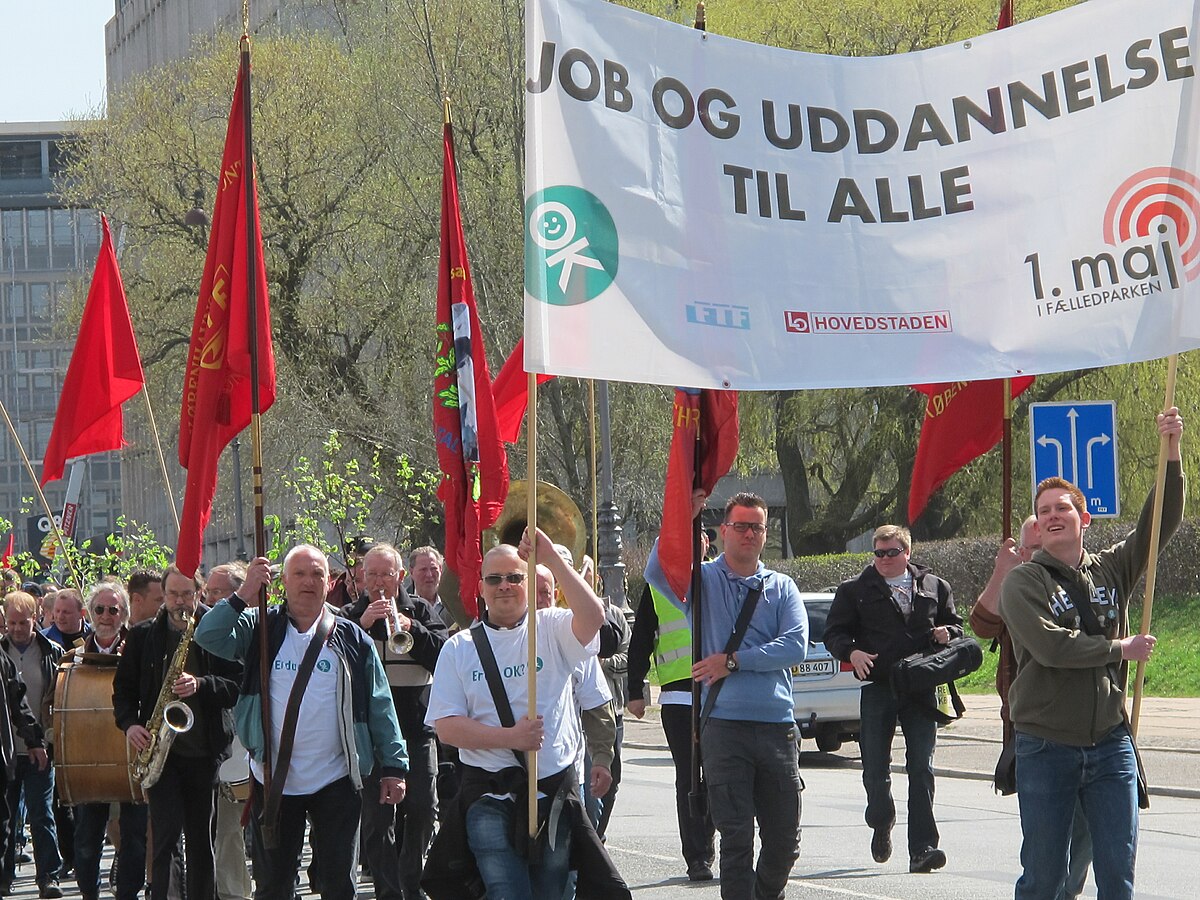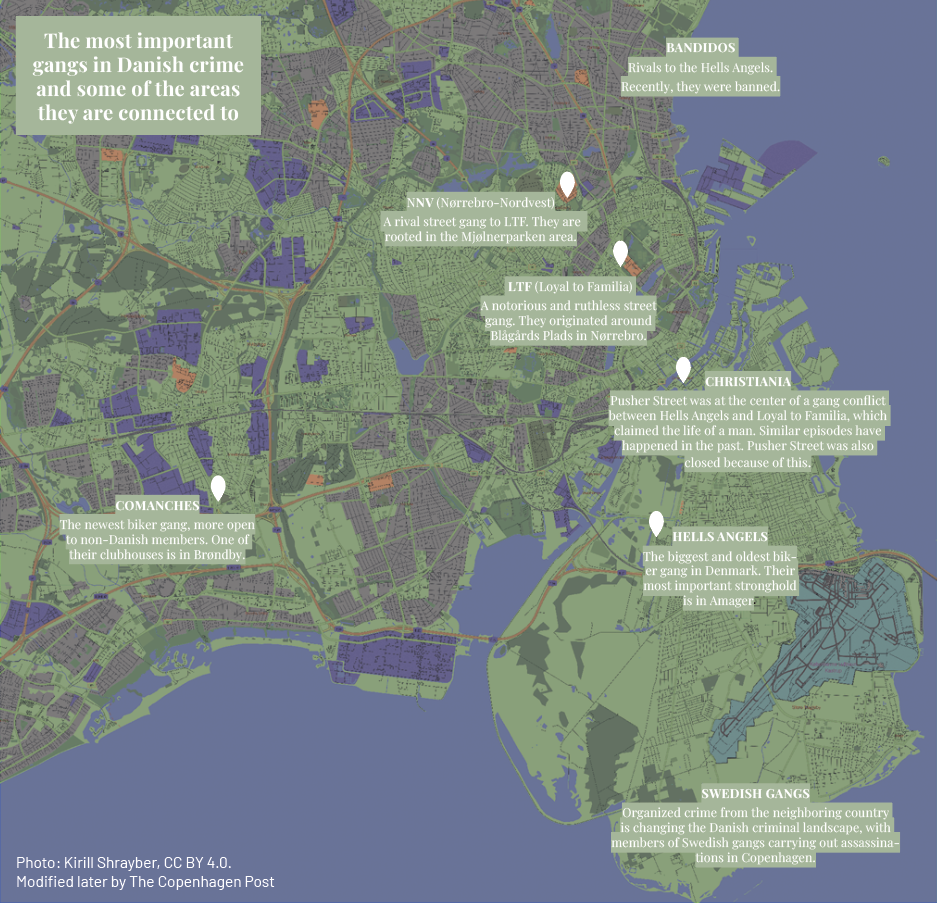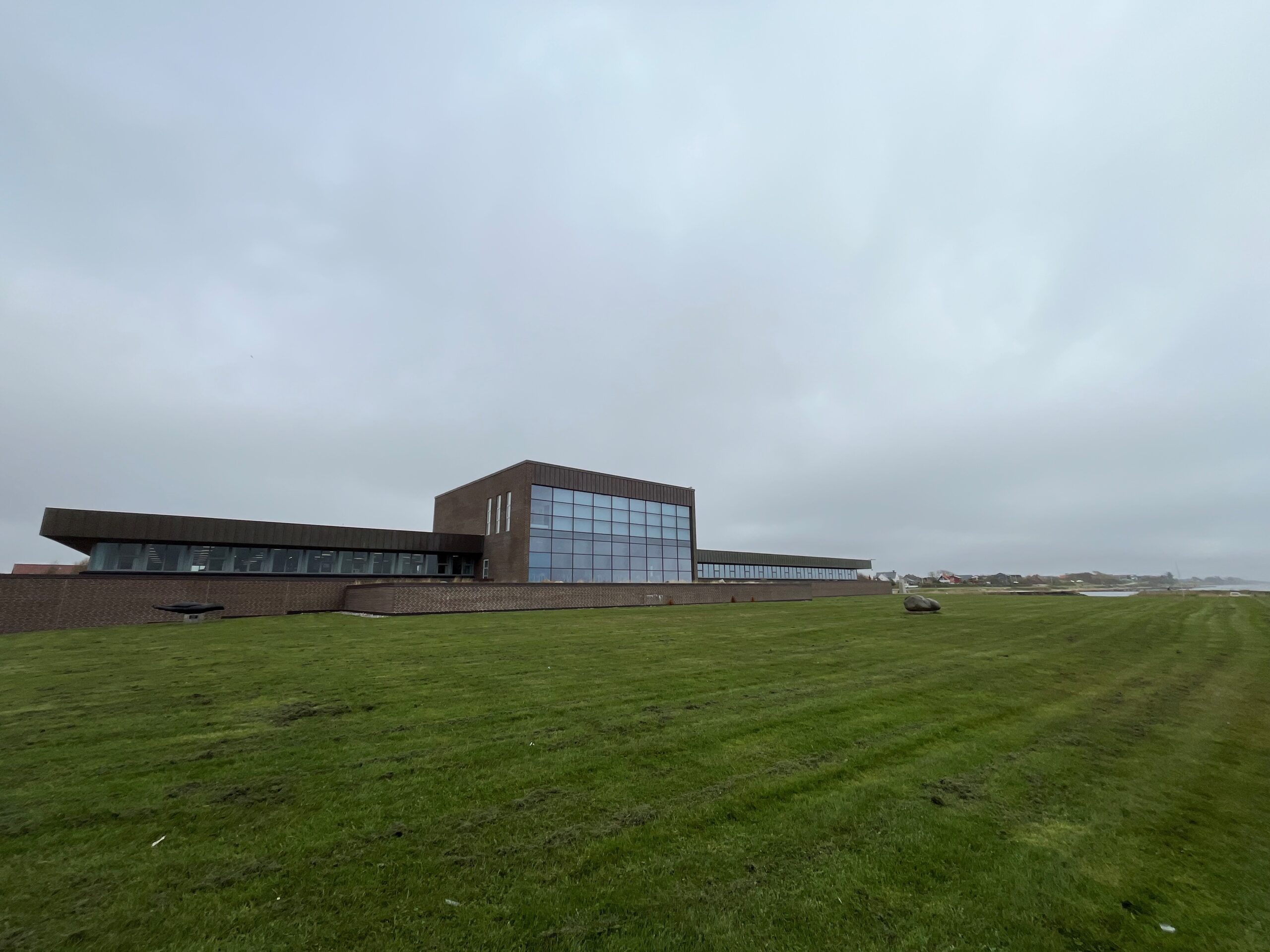In the summer of 2023, Danish photojournalist Jesper Houborg spent three months in Ramallah, Masafer Yatta and Jenin refugee camp in Palestine’s West bank.
There, he documented the everyday lives, dreams and resistance of young Palestinians, capturing stories that range from a graduation party to a funeral; from children watching cartoons in the afternoon to civilian clashes with the military.
Now, his work forms a powerful photography exhibition called YOUNG VOICES FROM THE WEST BANK, on show at the public urban space Den Røde Plads in Nørrebro, Copenhagen.
In YOUNG VOICES, Houborg shows us the bustle of a local swimming pool, juxtaposed with a rural community whose home and livelihood is threatened by violent settlers.
This was Palestine before the war in Gaza broke out on October 7 – but 2023 had already been the deadliest year in the West Bank for two decades.
His lens captures both young people who insist on nonviolent resistance and others who see no other option but to resort to arms.

Young, educated Palestine
“I had never been to Palestine before, but as a photographer – and just as a human being who cares about international conditions – I had wanted to go myself for a long time,” says Houborg.
Access and travel within Palestine was not an issue: with help from the peaceful activism group International Solidarity Movement (ISM), he stayed with families in Masafer Yatta in the rural South Hebron Hills.
Meanwhile, the Palestinian NGO Al-Haq introduced him to a broader spectrum of people: “I was looking for different classes, geographies and groups of Palestinians. I met a young woman who had recently graduated from university and urban professionals, as well as people in the countryside, many of whom it turned out also had a higher education,” he recalls.

“Just to be alive: that’s activism”
As to which dominant Danish or Western narratives of Palestinians and their lives under occupation were challenged when he got to know the people living in West Bank himself, Houborg says:
“I knew from the beginning that what I have been presented with is a conflict narrative of two actors fighting one another, made up of images of, for example, Palestinian boys throwing stones at Israeli soldiers.”
“So what did I see? Not surprisingly, the reality was not like the dominant media narrative in the West. I went there wanting to understand why they’re activists… but it quickly became clear that my understanding of being an activist didn’t fit.
I thought being an activist was a choice you make: I want to be an activist; I want to stand up for something.
For them, it’s not a choice. The Israeli occupation is so overwhelming and present 24/7 that being an activist can be as little as trying to have a dignified, normal life,” he explains.
In one of the images in YOUNG VOICES, a Palestinian family cultivates a small garden in the hills of Masafer Yatta. “I saw that trying to keep a garden on your own land was activism – because the surrounding settlers and the Israeli military have many times destroyed these gardens,” says Houborg.
“99 percent of people practiced nonviolent resistance – which could be having a garden. It could also be trying to speak up on social media by documenting the everyday. What’s happening when Israeli settlers are harassing them on their own land? What’s happening when the Israeli military arrives to back up these settlers? They used a lot of social media, also in the countryside.”
“That changed my perspective. Just to be alive: that’s activism.”
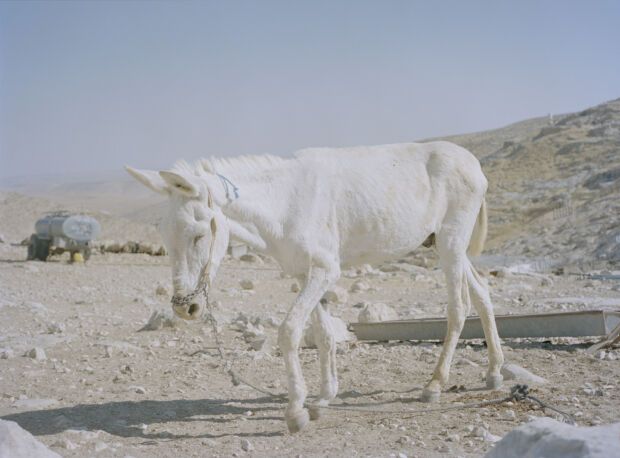
An absent war of ideologies
In Jenin refugee camp, an enclave in the north known for its strong resistance fight against the occupation and for its armed resistance, Houborg again witnessed a more nuanced narrative than that of Western media.
“When you’re reading the dominant news in Denmark, armed resistance is portrayed as terrorism. What I learned, and maybe already knew, was that it’s different when it’s in front of your eyes,” says Houborg.
“No one was saying ‘we want to kill the Jews’. From what I saw, they said ‘we want to protect our local community, the refugee camp, against the Israeli soldiers. They only talked about fighting the suppression and the occupation – so that was another different perspective,” he explains.
Israeli soldiers regularly deploy military operations inside Jenin, in search of what they call ‘Palestinian terrorists’, but who self identify as freedom fighters. “Raids are a fact of life in the occupied West Bank, particularly here in Jenin,” said AlJazeera correspondent Bernard Smith in a recent interview.

There is no why
Houborg finds it hard to choose one particularly impactful person or moment, but recalls a conversation he had while attending the funeral of a two-year-old boy:
“At the end of June, I attended a funeral for a two-year-old who was shot in the head by Israeli soldiers on a peaceful afternoon in front of his house, as he was going to a family birthday with his father.
I saw the body being taken care of by women, then men carrying the child in a ceremony through the village.
A tumult broke out because Israeli soldiers, who had a checkpoint on the outskirts, came into the town during the funeral.
You can imagine that a confrontation could easily arise with the same soldiers who had shot the two-year-old boy.
Suddenly there was tear gas and a young man – now in a wheelchair – was shot in the hip.
To get out of danger, I went to a neighbouring house. The lady who lived there told me the rooftop was often used by the Israeli soldiers, who would threaten to kill her if she didn’t stay inside, to get an overview of the area.
I asked her, why was this two-year-old boy killed? That’s the question that any person coming from Denmark, the West, or in general in the whole world, would ask. Why?
The answer she gave me was: ‘under occupation, there’s no why.’
What was mind blowing about being there, and also coming back home, was to feel that you have been in a world where the normal rules of human behaviour don’t apply. At all.
It’s not because of the Palestinian people, per say. They are, as I got to learn, very welcoming. It’s because of the surrounding context created by the Israeli occupation.
It’s normal to ask why an innocent two-year-old is killed. But you begin to learn that it doesn’t really make sense to ask why, because the answer is probably ‘because they can.’”
Houborg references Breaking The Silence – an organization of ex-Israeli-soldiers speaking up about their experiences in the Israeli army:
“According both to their reports, and to the local families I met, it’s common knowledge that the soldiers – who are bored and very young – 18 to 20 years old – make games out of shooting the local people,” he says.
The funeral images comprise one end of the violence-spectrum in the documentary of YOUNG VOICES. At the other is an especially powerful shot from a swimming pool, where a young man leaps from a diving board.
“It’s different from what you expect when you hear the words West Bank and picture life there. It shows the joy and play of life,” he says.
On the wall is a beautifully symbolic frieze – a painted landscape of palm trees and dreamy rivers. “All the things they don’t have access to. They cannot exit the West Bank without permission. If you come from Jenin, that’s pretty difficult,” says Houborg.
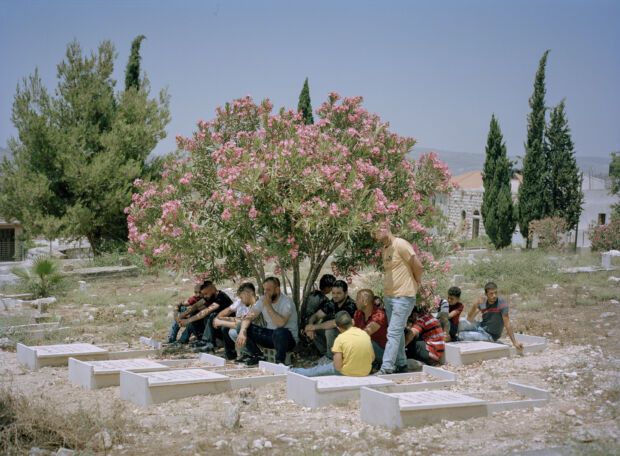
Humanistic photography
The majority of the images in YOUNG VOICES were shot on a medium-format analogue camera.
This equipment, which necessitates slow and mindful operation, differentiates Houborg’s approach from that of the stereotypical action-seeking war journalist with a compact Leica.
“I have been doing these long-term projects for more than 10 years, and I’ve developed an insistence on documenting life in a very humanistic way,” he explains.
“It can be hard for a Danish person to identify with someone throwing a stone at a soldier – but you can relate to a person having their high school graduation party. I use medium format because it forces me to photograph differently, slowly, which emphasizes my mindset. It ensures I don’t reproduce what we normally see.”
According to the UN, more than 15 villages in the West Bank have been displaced by settlers and the Israeli military, and over 300 Palestinians have lost their lives since October 7. Some of these are youths and children documented in YOUNG VOICES.
Though Houborg says it’s hard not to be affected by this on a personal level, he sees that the most powerful form of activism is to make visible Palestinian everyday life.
“When you’re reporting from a site like Palestine – or any places that we associate with conflict – I believe it’s a problem if you keep blindly contributing to the dominant narrative.”
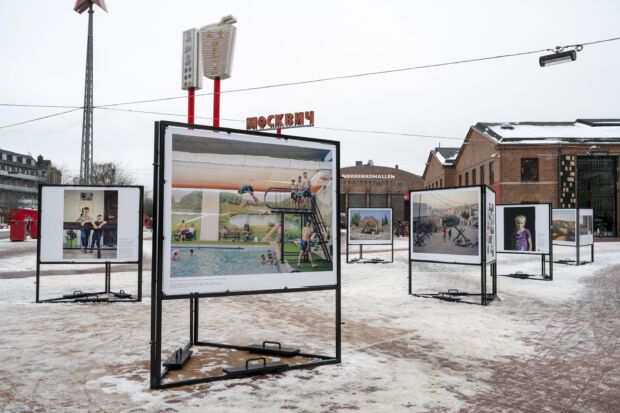

Visit Jesper Houborg’s exhibition YOUNG VOICES FROM THE WEST BANK at Den Røde Plads until 12 February.
The project is supported by OpEn – The Danish Ministry of Foreign Affairs Information & Engagement Fund.


